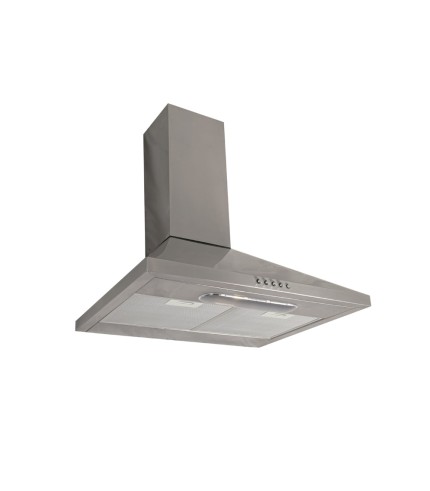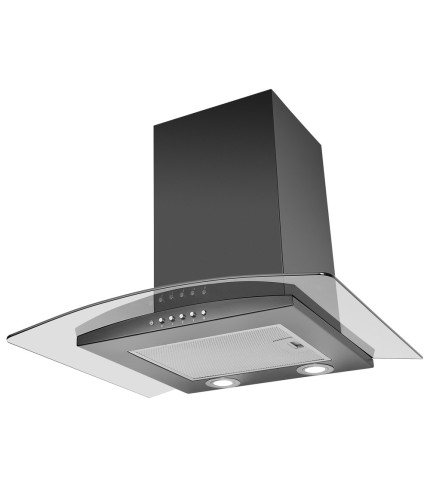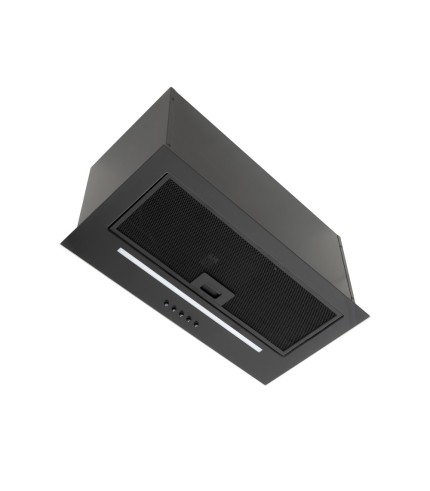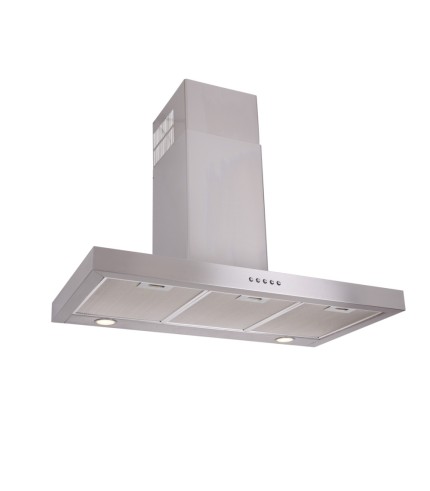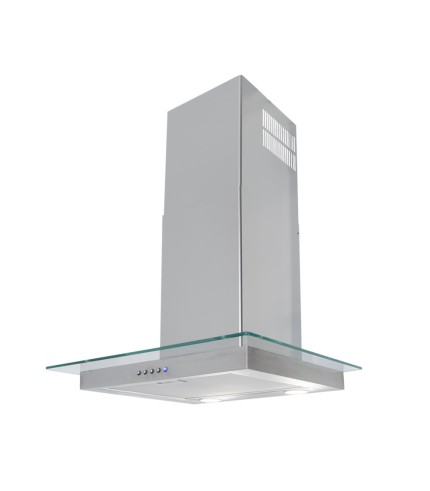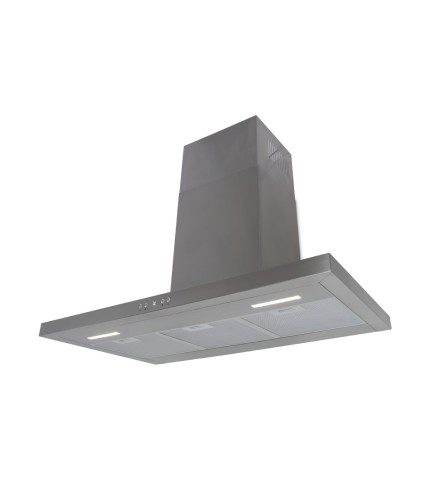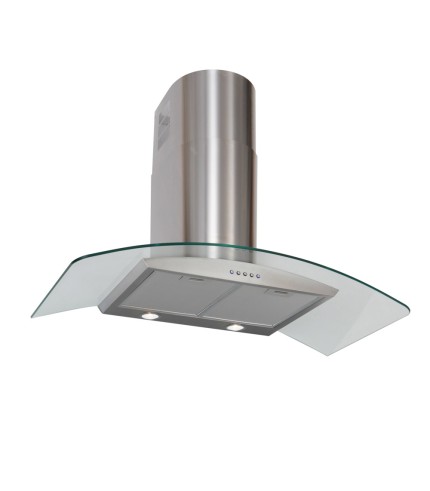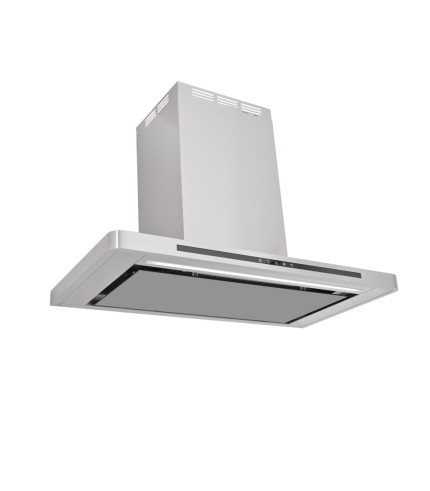-
Your shopping cart is empty!
Cooker Hood FAQs
All The Answers In One Place
1. What is a cooker hood and why do I need one?
A cooker hood, also known as an extractor hood, is an appliance installed above your hob or cooktop to remove cooking fumes, smoke, steam, and odours. It improves air quality, reduces grease build-up, and keeps your kitchen fresh.
The most popular cooker hood styles include:
Chimney hoods – classic wall-mounted design with a flue.
Island hoods – suspended from the ceiling over a kitchen island.
Canopy hoods – integrated under a cabinet for a seamless look.
Ceiling hoods – flush-fitted into the ceiling for a minimalist style.
Downdraft extractors – rise from the worktop when in use, then hide away.
Induction hobs with built-in extractors – combine cooking and extraction in one appliance.
For compact kitchens, canopy hoods or integrated hoods save space and blend into cabinetry, while induction hobs with built-in extractors are perfect for open layouts without wall space.
Vented (ducted) hoods expel air outside, providing the most effective odour and moisture removal.
Recirculating hoods use filters to clean air and return it to the kitchen, ideal where external ducting isn’t possible.
If you can duct externally, choose vented for maximum performance.
The optimal ducting diameter is 150mm (6 inches) for best airflow and noise reduction. Many hoods allow 125mm (5 inches) ducting, but performance may drop. Always match the duct size to the hood manufacturer’s recommendation.
Yes. In fact, induction hobs with integrated extractors are a growing trend, offering direct extraction from the cooking surface. This reduces steam spread and is perfect for open-plan kitchens.
Ceiling hoods free up wall space, maintain open sightlines, and suit island cooking areas. They often include LED lighting and can be paired with remote controls for convenience.
Island cooker hoods are suspended from the ceiling and designed to extract in open spaces, while wall-mounted hoods are fixed to a wall. Island hoods often have 360° extraction zones and stronger lighting.
A canopy hood fits under a kitchen cabinet or canopy, making it almost invisible. It’s ideal for those who want discreet extraction without impacting kitchen aesthetics.
Common sizes:
150mm (6") – Best airflow, lowest noise.
125mm (5") – Acceptable for smaller hoods.
100mm (4") – Not recommended unless unavoidable, as it reduces extraction performance.
For most hoods:
Electric/induction hobs: 65–75 cm above the hob.
Gas hobs: 75–80 cm above the hob.
Always follow the Luxairs guidance for safety and efficiency.
Grease filters (aluminium or stainless steel) – trap cooking grease.
Carbon filters – used in recirculating hoods to remove odours.
Grease filters are washable; carbon filters need replacing periodically.
As a rule of thumb, choose a hood that can replace your kitchen’s air 10–12 times per hour. Multiply your kitchen’s volume (L × W × H) by 10 for the minimum extraction rate in m³/h.
Noise depends on motor power, ducting, and extraction mode. Vented hoods are usually quieter than recirculating models because there’s no fan resistance from carbon filters. Look for models under 60 dB for quieter operation.
A cooker hood (also called an extractor hood or kitchen hood) is a ventilation appliance designed to remove grease, odours, smoke, and steam from your kitchen. By keeping the air clean and preventing greasy residue on surfaces, cooker hoods improve comfort, hygiene, and even protect your kitchen’s long-term appearance.
Choosing the right style depends on your kitchen design, available space, and cooking habits.
Chimney Cooker Hoods
Wall-mounted, with a flue to vent air outside.
Ideal for traditional or modern kitchens with a focal cooking wall.
Island Cooker Hoods
Suspended from the ceiling above an island hob.
Provide 360° extraction and often include powerful lighting.
Canopy Cooker Hoods
Built into a cupboard or canopy for a discreet, integrated look.
Perfect for small kitchens or those who want the hood hidden.
Ceiling Cooker Hoods
Installed flush into the ceiling for an unobtrusive, minimalist style.
Great for open-plan kitchens.
Downdraft Extractors
Pop up from the worktop when in use, then retract when not needed.
Excellent space-saving solution for island cooking.
Induction Hobs with Built-in Extractors
Combine cooking surface and extraction in one unit.
Capture steam and odours directly from the source.
Vented (Ducted)
Air is expelled outdoors through ducting. This is the most efficient method, removing moisture as well as odours.
Best for: Maximum performance and homes where external ducting is possible.
Recirculating
Air passes through grease and carbon filters, then returns to the kitchen.
Best for: Apartments or spaces without external ventilation routes.
For optimal performance:
150mm (6") ducting – Best airflow, quietest operation.
125mm (5") ducting – Acceptable for smaller hoods.
100mm (4") ducting – Not recommended except when unavoidable.
Tip: Always use smooth, rigid ducting instead of flexible ducting to reduce turbulence and noise.
Ceiling Hoods: Maintain open sightlines and work well in minimalist spaces. May require a remote control for convenience.
Island Hoods: Feature strong extraction and lighting to handle open space cooking.
Canopy Hoods: Perfect for blending into cabinetry and saving space.
A growing trend in modern kitchen design, induction hobs with integrated extraction units provide direct steam capture, perfect for open layouts where traditional hoods would obstruct views.
Grease Filters: Capture oils and are washable.
Carbon Filters: Remove odours in recirculating hoods and require replacement every 3–6 months.
Choose ducted if possible for better performance.
Use the largest recommended ducting size.
Match style to your kitchen layout.
Prioritise extraction rate and noise control.


